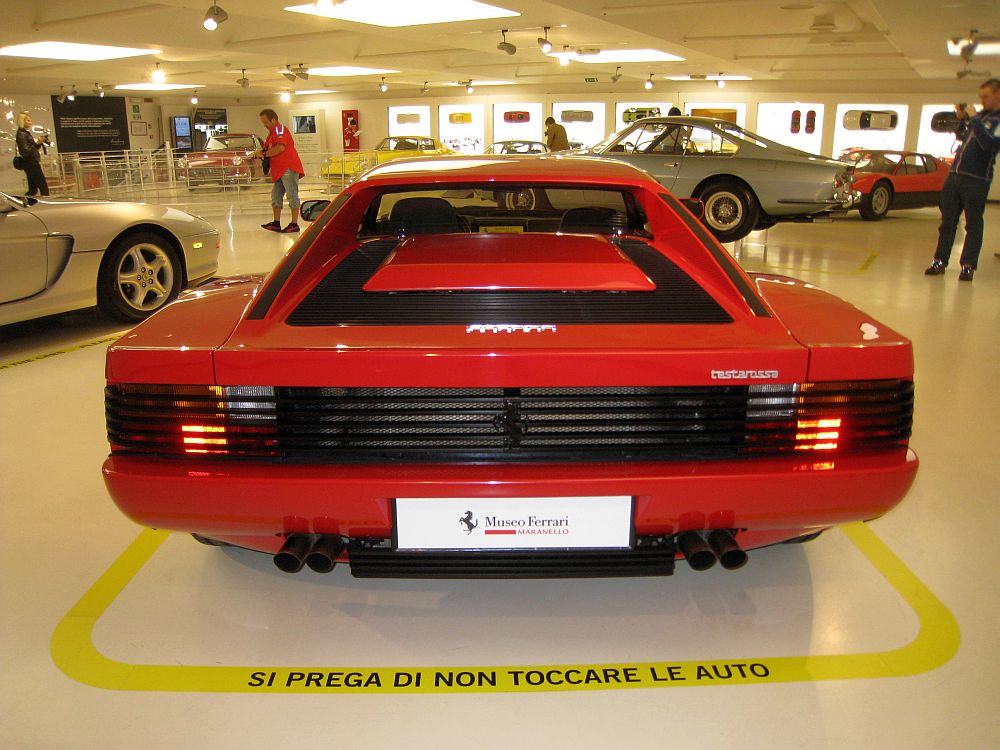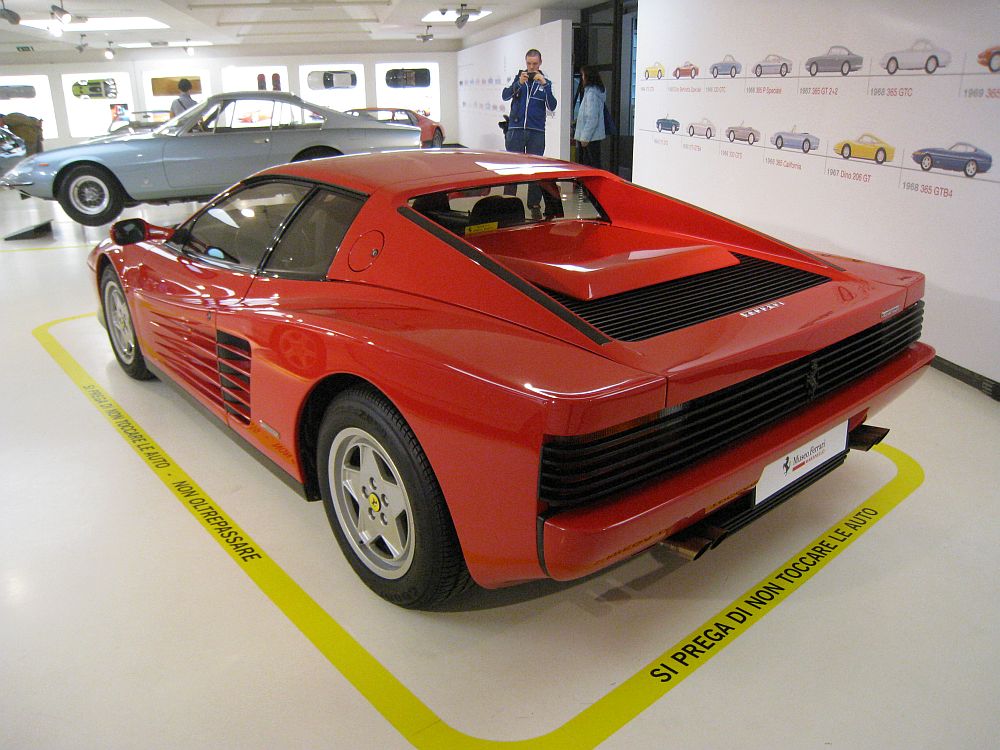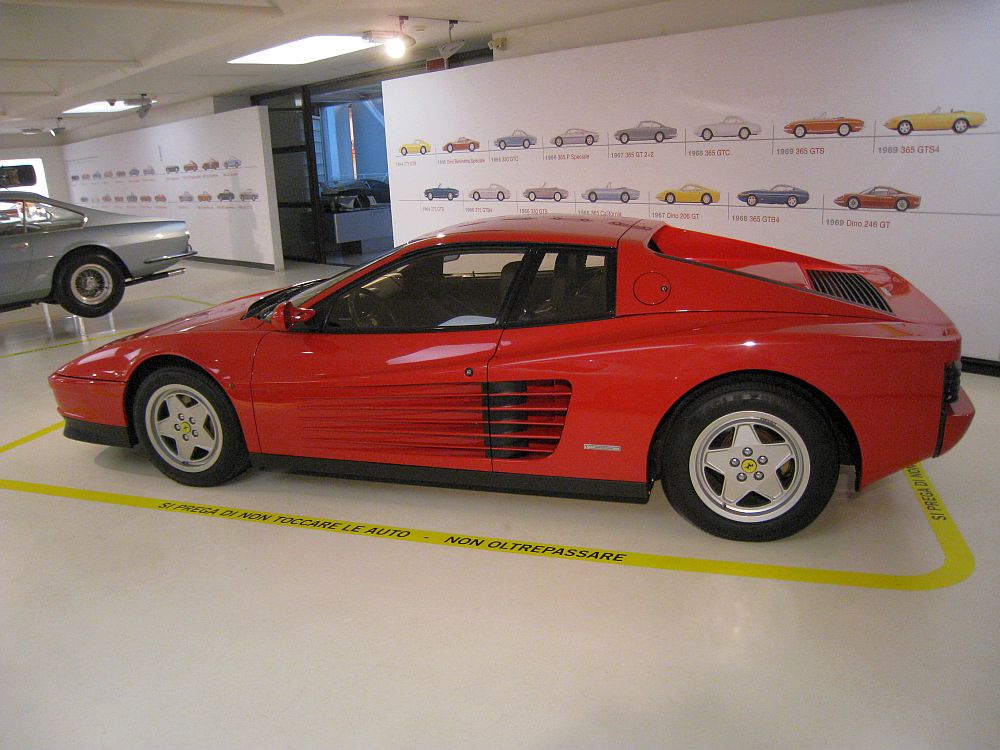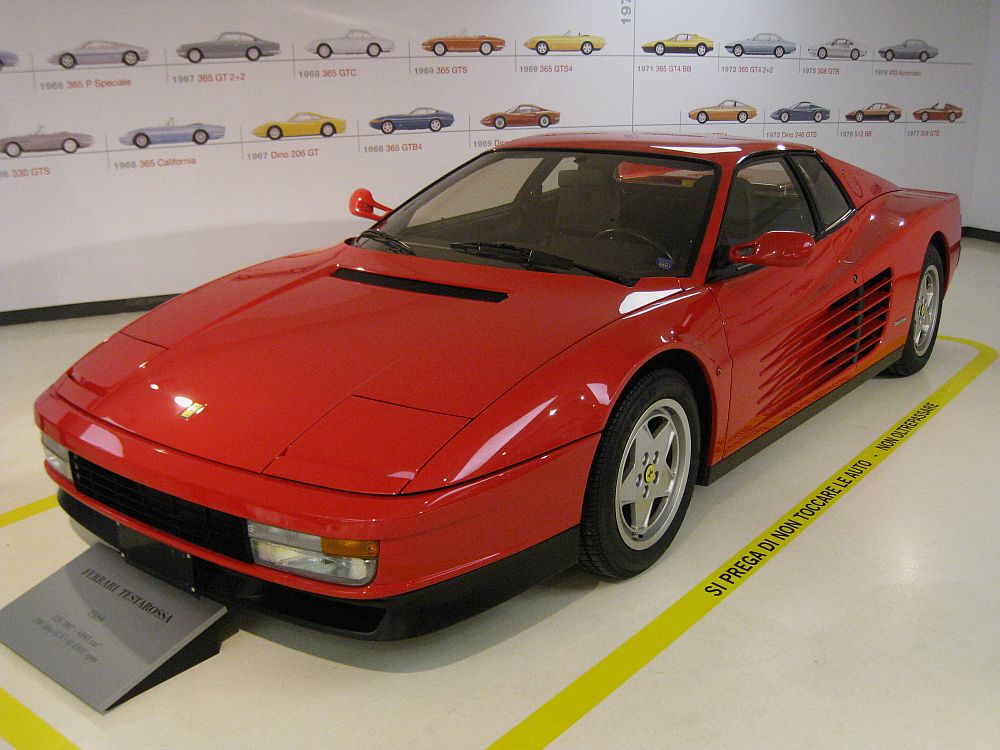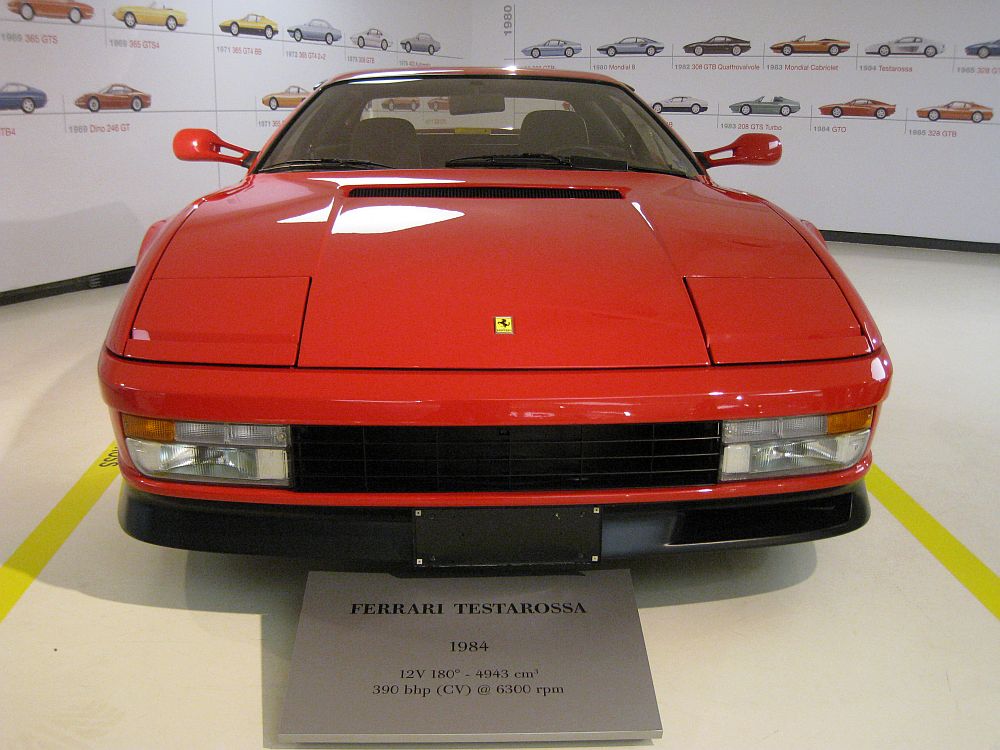Description
The Ferrari Testarossa, introduced at the 1984 Paris Motor Show, was one of the most iconic grand tourers of the 1980s and 1990s. Designed by Pininfarina, it replaced the 512 BBi as Ferrari’s flagship and quickly became a symbol of the decade, thanks to its dramatic styling, immense performance, and widespread appearances in media and popular culture.
At its heart, the Testarossa carried forward Ferrari’s flat-12 layout, this time a 4.9-litre unit producing 390 horsepower in European trim. With a top speed of around 290 km/h and 0–100 km/h acceleration in about 5.3 seconds, the car offered both blistering performance and long-distance comfort. The flat-12 layout kept the car’s profile low while also providing excellent weight distribution, although it made the Testarossa notably wide at the rear.
The most striking element of the Testarossa was its design. Pininfarina gave it sharp, angular lines contrasted with broad side strakes running along the doors and rear quarters. These strakes, often called “cheese graters,” were not merely stylistic, but functional, channeling air into the massive side-mounted radiators that helped cool the mid-mounted flat-12 engine. The car’s wide stance and flat, wedge-shaped nose gave it immense road presence, while its rear housed twin circular taillights and a full-width black grille, emphasizing its dramatic proportions.
Inside, the Testarossa combined luxury and sporting intent. The cabin was trimmed in leather with a driver-focused cockpit, offering comfort for long journeys alongside the thrill of Ferrari performance. Compared to its predecessor, it was more spacious, thanks in part to its wider body and clever packaging.
Production of the Testarossa ran from 1984 until 1991, during which Ferrari built nearly 10,000 examples, making it one of the most successful models in the brand’s history. It was later developed into the 512 TR and the F512 M, which refined the car’s dynamics and styling but retained the essential character.
The Ferrari Testarossa today is remembered as a true icon, a car that embodied the excess, ambition, and style of the 1980s. It represents a turning point in Ferrari’s history, balancing performance with luxury and unmistakable design, and remains one of the most collectible modern classics.

